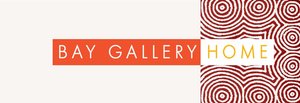Athena Nangala Granites, Yanjirlpirri or Napaljarri-Warnu Jukurrpa, (Star or Seven Sisters Dreaming)
Bay Gallery Home often gets approached with people wanting to us to sell Aboriginal paintings they’ve bought. Sadly time and time again we have to inform them that the paintings, despite having [questionable] certificates of authenticity, are from disreputable sources. Most likely they are fake or they have been acquired under sweatshop conditions. Aboriginal artists are particularly vulnerable if they are not working within the protection of an Aboriginal owned art centre.
Bay Gallery Home won’t deal on the secondary market as we only work with art centres ensuring the artists are renumerated for the paintings we sell. We’ve been wanting to write this blog for sometime as it’s evident questionable works are making it into the UK market. There are several reputable dealers in the UK so if you want an authentic work please approach any of us so we can ensure you have a work you can be confident is genuine, you can resell and that you are assured the artist will be compensated for their work.
To help you work out how to buy good Aboriginal art not “rubbish art”:
Look up address of gallery and thoroughly go through their website. Many of the questionable paintings or “rubbish art” we are offered are for sale with only a PO Box as the address. Sometimes the sellers name alerts me that something is up. In the 15 years I’ve been dealing Aboriginal art I’ve never come across a gallery operating under the name or the dealers name appearing on the certificates I’ve been shown. Look carefully at the photo of the artist on the certificate. Does the artist look happy? I’ve been shown certificates where the artist clearly looks distressed, others where the artists head doesn’t even appear in the picture. Sometimes the background itself is distressing - a dirty bit of carpet they’ve been sitting on for hours painting an artwork surrounded by shopping trolleys out the back of a building. These should all ring alarm bells.
You may be offered paintings by carpetbaggers. Carpetbaggers are people who approach artists and offer them very little money for the paintings then go on to sell them for a large profit. Often these people were professionals who came into contact with Aboriginal communities through their work. The prevalence of carpetbagging is one of the reasons art centres were established.
The works should be on good quality linen. If the work is painted black to the edge and the “canvas” feels plastic then it’s best avoided. Art centres do not offer paintings like that. In the past we have been offered paintings like this and could not authentic where or by who they were painted.
Beware of sheer bulk of work offered. If you are offered a choice of hundreds of paintings (remember the ones on a plastic feeling canvas) approach with care. Many of the Aboriginal communities are small with 30-150 artists painting at any one time. These works are then chosen by established galleries around the world.
If you want an Aboriginal painting try to buy one from a gallery with bricks and mortar not just an online presence. You should be able to see and feel the painting. Ask lots of questions about the stories behind the painting, the artist and the community. A legitimate Aboriginal art dealer will be able to answer all your questions as well as offer you anecdotal stories because they have been to the art centres and met the bulk of artists they represent.
Ochre paintings have employed “chemical fingerprints” so as to identify works produced by Aboriginal artists (ochres are mainly used by artists in the Kimberly region). The chemical is mixed with the paint so as to distinguish authentic art from imported art done by non-Aborignal artists.
Sometimes people comment that our paintings aren’t perfect. Funnily enough imperfections are what you are looking for in Aboriginal art. Many of our paintings will have bits of the desert in them, human or dog hair and we’ve even had one with tomato seeds! Dogs are central to Aboriginal communities and form an important part of art centre life so are often sitting close to the artists so it’s no surprise their hair makes it into some of the work. While the artists are incredibly gifted with geometric patterns if you have a work that’s gone slightly awry then it’s more likely authentic.
Steer clear of sites like eBay where a lot of fakes or paintings done under duress are offered.
Cultural appropriation is a major threat to the authentic Aboriginal art industry. Moves have been taken to curtail this, like the Australian Government initiative ‘Fake Art Harms Culture’, but we ask you to be mindful when buying didgeridoos, boomerangs, digging sticks etc. A lot of these are imported from Indonesia and China. A shocking example of this in the UK was a fake work used in Ricky Gervais’s tv show After Life. The painting used was a copy of a painting by Warlimpirrnga Tjapaltjarri, Tingarri Dreaming (1987). Derek Productions, Gervais’s production company has since paid compensation to the artist and obtained a retrospective license to use the painting. Timna Woollard, the artist commissioned to copy the original art work has said to was among those commissioned for a UK television and prop company in 1989.

